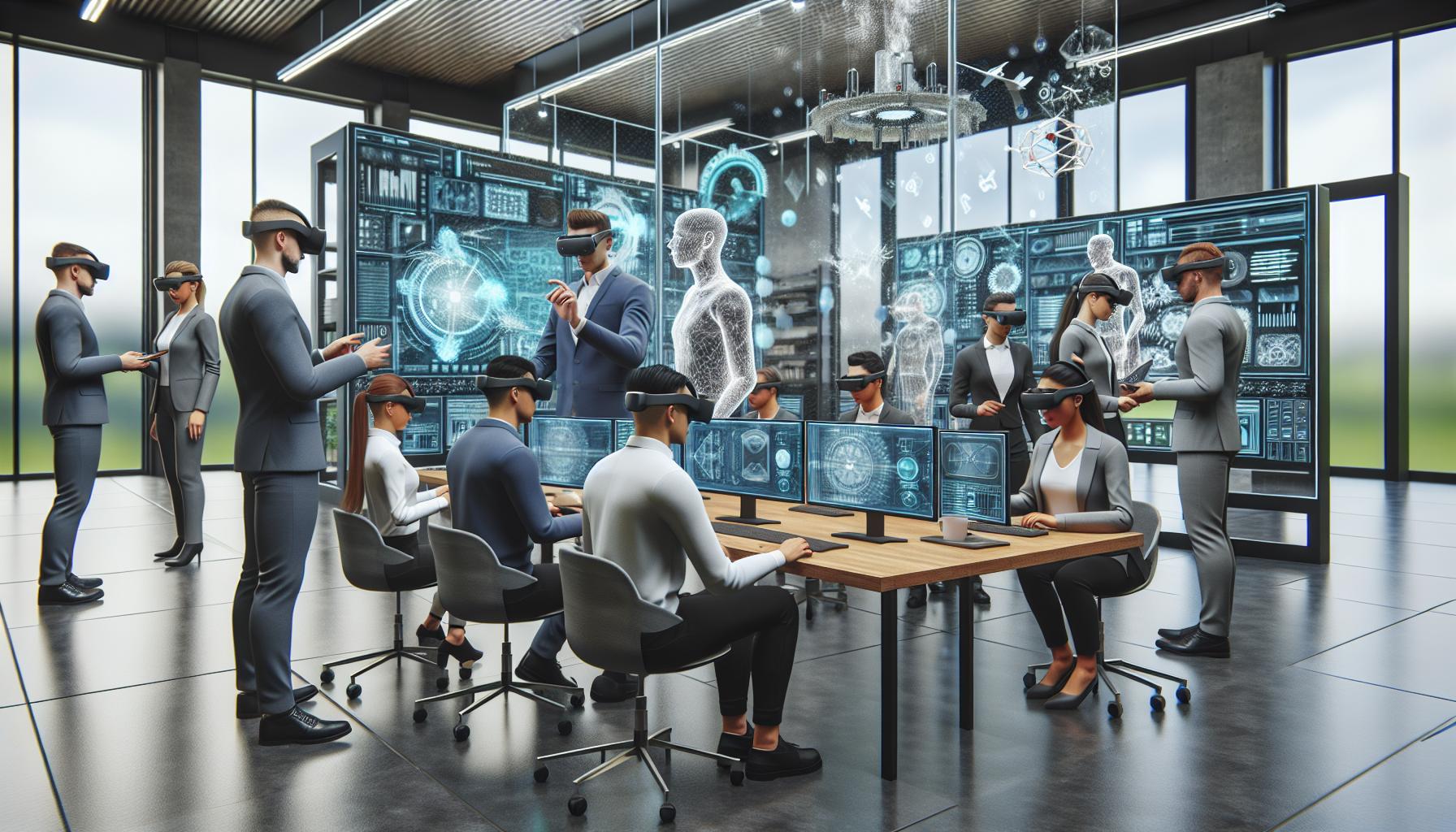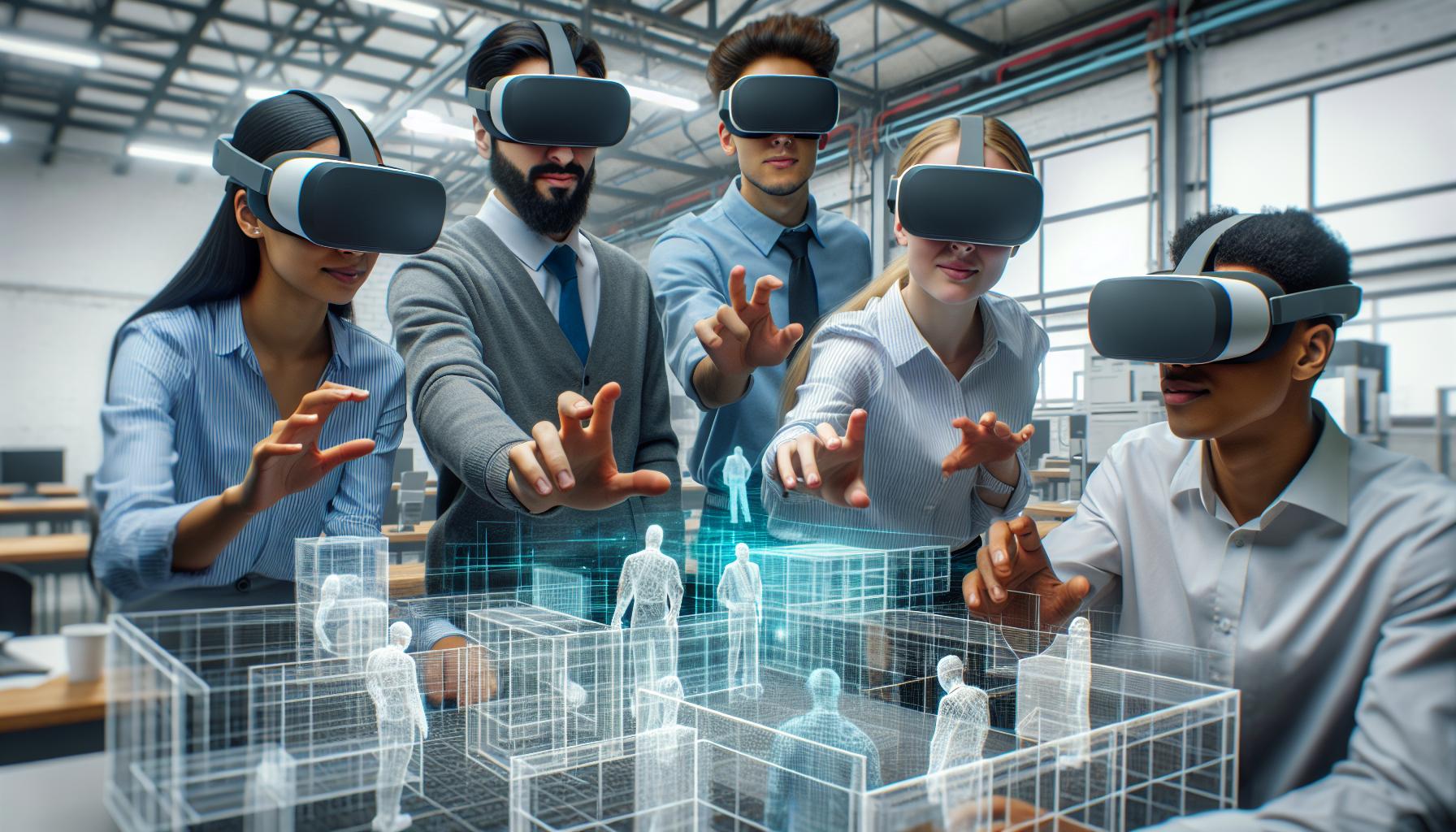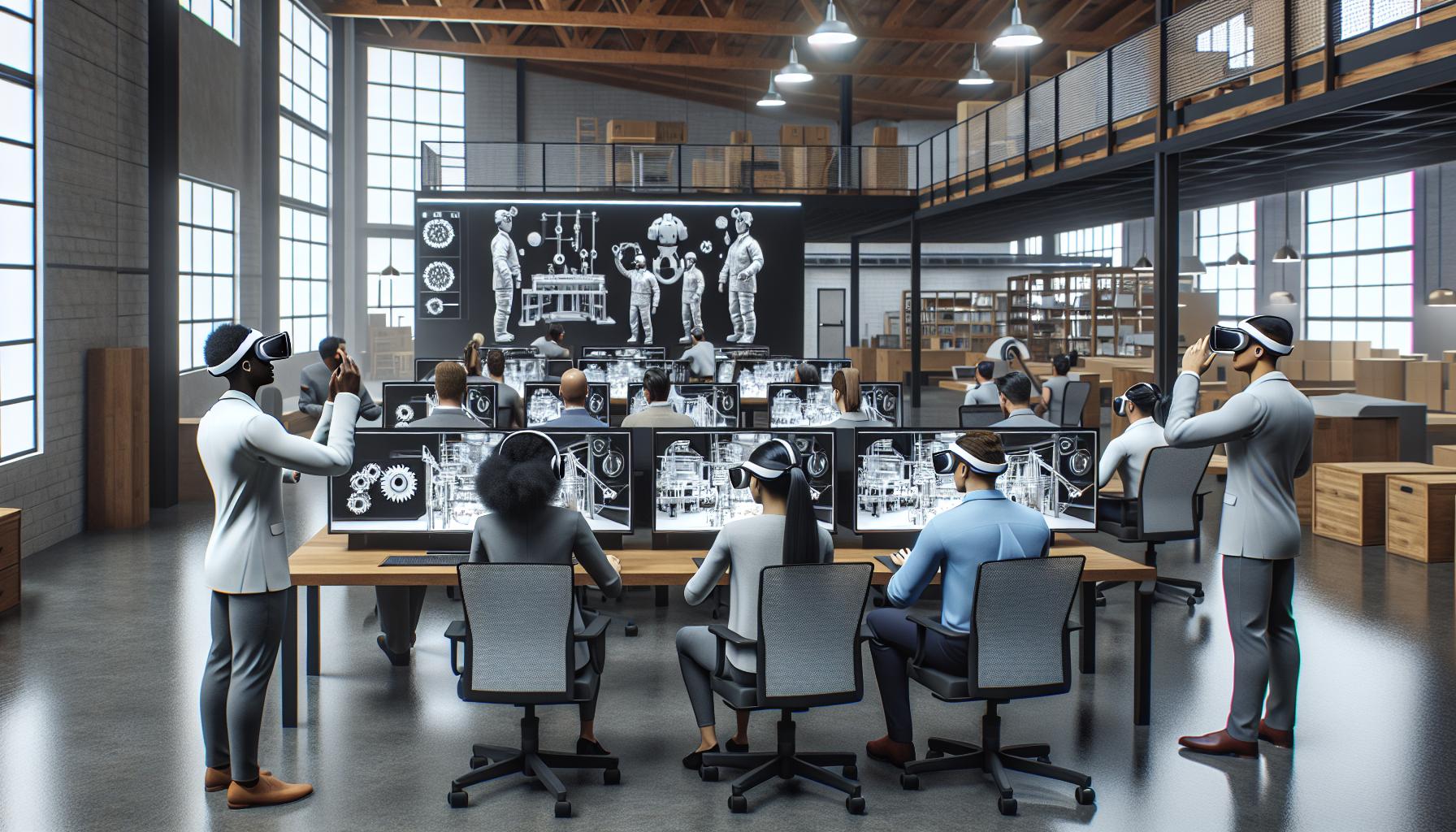Imagine stepping into a training session where your learning environment transforms into a vibrant, interactive playground. That’s the magic of augmented reality training software. It’s like having a personal trainer who not only shouts motivational quotes but also brings dinosaurs into the room—because who wouldn’t want to learn alongside a T-Rex?
This cutting-edge technology isn’t just a gimmick; it’s revolutionizing how companies train their employees. By blending the physical and digital worlds, augmented reality makes complex concepts easier to grasp and keeps learners engaged. Forget about dull PowerPoint presentations—this is training that sticks, and it’s time to embrace it. Whether it’s for safety drills or technical skills, augmented reality training software is the future, and it’s ready to take your learning experience to the next level.
Augmented Reality Training Software
Augmented reality training software enhances learning experiences by overlaying digital content onto the real world. This innovative technology allows users to interact with 3D models, visual aids, and simulations in real-time. Companies utilize AR software for varied training needs, including safety protocols and technical skills development.
Interactive scenarios engage trainees, enabling them to practice hands-on skills without real-world consequences. Users gain immediate feedback while making decisions in simulated environments, mirroring actual job situations. This immersive approach bolsters retention rates and accelerates learning processes.
Incorporating AR technology eliminates many limitations of traditional training methods. Traditional presentations often result in passive learning, whereas AR fosters active participation. Trainees experience dynamic visualizations that demonstrate processes, encouraging deeper understanding.
Industries such as healthcare, manufacturing, and aviation leverage AR training software effectively. Healthcare professionals practice procedures on virtual patients, enhancing their proficiency before actual encounters. Similarly, manufacturing teams simulate equipment operations, ensuring safe and efficient practices.
Training outcomes improve through the gamification elements present in AR software. Gamified experiences motivate learners and promote healthy competition. Using leaderboards or achievement badges, organizations enhance engagement and commitment among employees.
Investment in augmented reality training software offers substantial returns. Reduced training time and costs are significant benefits, along with improved employee performance. By harnessing innovative technology, companies position themselves at the forefront of training excellence.
Benefits of Augmented Reality Training Software

Augmented reality training software provides several advantages that enhance the overall training experience. Professionals in various industries reap significant benefits from this innovative technology.
Enhanced Engagement
Engaging employees in learning activities remains a challenge. Augmented reality training software transforms this experience by creating interactive and immersive environments. Employees interact with digital content that overlays real-world settings. This dynamic immersion increases their involvement and attentiveness during training sessions. Utilizing 3D simulations and visual aids offers learners an opportunity to explore and manipulate concepts actively. Participants experience training that feels like a real-world situation, which boosts motivation and interest. Enhanced engagement ultimately leads to a more enjoyable learning process that fosters a positive attitude towards training initiatives.
Improved Retention Rates
Retaining information often proves difficult in traditional training setups. Augmented reality’s interactive elements enhance memory retention effectively. Immediate feedback within simulated environments allows learners to grasp concepts in real time. Engaging with realistic scenarios prohibits passive learning and encourages active participation. Studies indicate that AR can enhance retention rates significantly, often by over 70%, compared to conventional methods. Frequent practice in a risk-free setting solidifies skills and knowledge, making it easier for employees to apply what they’ve learned. Improved retention translates to quicker mastery of essential skills and increased confidence during practical applications.
Key Features to Look For

When selecting augmented reality training software, several key features enhance the effectiveness and usability of the platform.
User-Friendly Interface
A user-friendly interface streamlines navigation for learners. Simplicity in design ensures quick access to training modules. Intuitive controls allow users to engage with content easily, minimizing technical distractions. Clear visuals and organized layouts help learners focus on their tasks without confusion. A responsive design supports various devices, enabling users to switch seamlessly between platforms. Ease of use significantly impacts training effectiveness, as students find it easier to concentrate on learning objectives.
Customization Options
Customization options tailor the learning experience to meet specific organizational needs. Flexibility in content creation empowers trainers to modify scenarios to align with real-world challenges. Users can adjust difficulty levels to cater to different skill sets, promoting personalized learning trajectories. Integration with existing learning management systems enhances efficiency by allowing a cohesive training environment. This adaptability addresses individual learner preferences, ensuring that all participants gain maximum benefit from training programs. Custom features can lead to higher engagement and improved retention rates.
Popular Augmented Reality Training Software Solutions

Numerous augmented reality training software solutions are available, each offering distinct features and advantages. Here are three notable examples.
Solution 1: Overview and Benefits
Pixaera leads the field with its immersive training platform that seamlessly integrates AR into employee onboarding. Users benefit from engaging 3D visualizations that illustrate complex machinery and procedures, significantly enhancing comprehension. Its gamification elements foster healthy competition among learners, increasing motivation. Additionally, real-time analytics provide trainers with insights into individual progress, enabling tailored feedback that optimizes learning outcomes.
Solution 2: Overview and Benefits
STRIVR specializes in VR-centric training that includes augmented reality functionalities. Learners gain hands-on experience through simulations of real-world scenarios, which enhances skill retention. The interactive design promotes a safe environment to practice high-risk tasks without real-world consequences. Furthermore, extensive compatibility with various devices allows organizations to implement this solution easily, accommodating diverse workforce needs.
Solution 3: Overview and Benefits
Zappar offers a versatile AR platform that focuses on creating customized training experiences. The software’s ability to integrate with existing training modules makes it particularly appealing for businesses. Users benefit from its straightforward interface, enabling quick adoption among employees with varying tech skills. Enhanced engagement and effective learning outcomes derive from its interactive features, which simulate realistic environments and encourage active participation.
Implementation Challenges
Implementing augmented reality training software presents various challenges that organizations encounter. Addressing these obstacles is essential for successful integration.
Technical Requirements
Meeting the technical requirements is a crucial first step. Organizations must ensure compatibility with existing hardware, including smartphones, tablets, or AR glasses. Sufficient network bandwidth is also necessary to support real-time interaction during training sessions. Specific AR software may demand higher processing power, which necessitates upgraded devices or infrastructure. Companies often experience setbacks if these technical specifications are overlooked during planning.
User Adoption
User adoption represents another significant challenge. Resistance from employees can hinder the effectiveness of AR training. Providing clear communication about the benefits of the software enhances acceptance. Proper training sessions should familiarize staff with the technology and its functionalities. Implementing a pilot program allows users to engage with the software before full-scale deployment. Gathering feedback during this stage fosters improvement and increases overall enthusiasm for the new training approach.
Augmented reality training software is revolutionizing the way organizations approach employee development. By creating immersive and interactive learning experiences, it not only enhances engagement but also significantly improves retention rates. The ability to practice in realistic environments leads to quicker mastery of skills and greater confidence among employees.
As industries continue to embrace this technology, the benefits become increasingly clear. With user-friendly interfaces and customizable options, AR training software can be tailored to meet the unique needs of any organization. Investing in this innovative solution positions companies for success in a competitive landscape, ensuring their workforce is well-equipped for the challenges ahead.

